Call Us Now (833) 261-2677
BLOG

Five Bank Accounts to Improve Cash Flow
For small businesses, cash flow isn't just another financial metric; it's the lifeline that sustains operations, drives growth, and ensures longevity. A steady and positive cash flow allows a business to cover its expenses, pay employees, reinvest in growth, and weather economic downturns. Yet, managing this flow of funds remains a perennial challenge for many entrepreneurs. While sales might be booming and profit margins might look promising, a hiccup in cash flow can derail even the most promising venture. With most small businesses operating on tight margins, there's little room for error. This is where strategic financial management becomes pivotal. By introducing multiple bank accounts into your business operations, you can optimize, streamline, and enhance your cash flow, ensuring that your enterprise remains buoyant and resilient in an ever-evolving economic landscape. Let's delve deeper into how this system can be a game-changer for your small business.

Operating Account: The Engine of Your Business
This account serves as the nerve center of your small business financial operations. Every business transaction, from receiving customer payments to covering overhead costs, happens here. It’s the beating heart that keeps your business operations smooth and functional.
Features to Look For: For small businesses, it's essential to select an account with low transaction fees, especially if you have a high volume of transactions. Prioritize accounts that offer integrated solutions for payroll, invoicing, and perhaps even POS (point of sale) systems. A robust online and mobile banking platform can be a boon for on-the-go entrepreneurs.
Tips for Usage: Use this account exclusively for business-related transactions. By separating personal and business finances, you not only ensure better cash flow management but also simplify tax-related processes. Ensure to maintain a minimum balance to cater to unforeseen expenses and to avoid any potential overdrafts. It’s also wise to review your account regularly to track revenues, identify payment delays, and monitor recurring expenses.
Personal Checking Account: The Owner's Financial Sanctuary
The Personal Checking Account stands as a distinct entity, separate from the business's finances. It's where the owner's individual financial transactions reside, ensuring a clear demarcation between personal and business expenses.
By drawing a fixed salary from the Operating Account at regular intervals, such as once or twice a month, the owner maintains a disciplined approach to personal expenditures and prevents the ad-hoc depletion of business resources. This clear boundary not only ensures that the business's finances remain uncompromised but also provides the owner with a transparent view of their personal financial health.
Additionally, such a structure simplifies accounting, tax preparations, and financial audits, as there's no mingling of personal indulgences with business costs. In essence, the Personal Checking Account is a testament to prudent financial management, safeguarding both the business and the owner's individual financial realms.
Business Profit Account: The Financial Buffer for Your Enterprise
The Business Profit Account acts as a strategic reservoir, ensuring that your business can weather unforeseen financial challenges and capitalize on emergent opportunities. At its core, this account is a reflection of a proactive and prudent financial strategy. Here's how it operates:
When funds in the Operating Account surpass a specific, predetermined threshold, a portion of the excess is transferred—or "scraped off the top"—to the Business Profit Account. This systematic siphoning not only curtails unnecessary or impulsive business expenditures but also ensures a steady accumulation of profit reserves. Over time, with consistent transfers, this account can burgeon to hold an amount equivalent to five or six times the monthly overhead of the business.
What's the strategic advantage of such a setup? First, by having a buffer that equates to several months of operational costs, the business gains the flexibility to navigate unexpected financial downturns, such as a sudden drop in sales, unforeseen operational expenses, or global economic challenges. This cushion can mean the difference between making essential payments on time versus facing financial strain.
Secondly, a robust Business Profit Account offers strategic leverage. With ample reserves on hand, a business can seize emergent growth opportunities, whether it's investing in new technology, expanding operations, or capitalizing on bulk purchase discounts from vendors.
In essence, the Business Profit Account is more than just a savings account; it's a strategic asset. It provides both security and opportunity, ensuring that the business remains resilient in the face of adversity and agile when growth beckons. By prioritizing the growth of this account, business owners signal a commitment to long-term stability and a vision for sustainable success.
Tax Account: Ensuring Compliance and Surprises, in a Good Way
The Tax Account stands as a sentinel of fiscal responsibility for any business. In the intricate dance of revenues and expenses, taxes often represent a substantial outlay, and the penalties for miscalculations or missed payments can be severe. With a well-managed Tax Account, businesses fortify themselves against such pitfalls and, interestingly, can also set the stage for a pleasant end-of-year windfall.
Here's the mechanics and rationale behind it:
Every time a transfer is made into the Business Profit Account from the operating surplus, a simultaneous transfer of an equivalent amount is made into the Tax Account. In essence, the net profit is being bifurcated, with half fortifying the business's reserves and the other half earmarked for tax obligations.
By consistently channeling 50% of the profit into the Tax Account, the business builds a robust fund expressly dedicated to meeting tax liabilities. This approach might seem excessively cautious to some, especially given that tax rates, in most jurisdictions, are significantly less than 50%. However, therein lies the beauty of this system.
Not only does this method ensure that the business is always amply prepared for tax season, effectively eliminating last-minute scrambles or potential shortfalls, but it also results in the accumulation of surplus funds over and above the actual tax obligation. By the year's end, after settling all tax dues, business owners often find themselves with a surplus in the Tax Account. This excess can be viewed as an unexpected bonus or a reward for diligent financial stewardship. It can be reinvested in the business, distributed as bonuses, or even transferred to the Business Profit Account to further bolster reserves.
The Tax Account serves a dual purpose: it provides a fail-safe mechanism ensuring complete and timely compliance with tax obligations, and it inadvertently creates a savings mechanism that can yield a pleasant surplus at the end of the fiscal year. By adhering to this disciplined approach, businesses not only safeguard their compliance but also introduce an element of positive financial surprise.
Investment Holding Account: Your Business's Growth Multiplier
The Investment Holding Account is akin to a launchpad, propelling the financial health and growth trajectory of your business into new dimensions. While the day-to-day operations ensure the survival and stability of a business, strategic investments catalyze its growth and fortify its future. The Investment Holding Account is designed precisely to serve this purpose – to channel and optimize funds for ventures that yield long-term dividends.
Here's the operational logic behind this account:
Your Business Profit Account has a predetermined cap, often set at five or six times your monthly overhead. This cap isn't arbitrary but is rooted in financial prudence: it ensures you have a robust safety net but prevents hoarding capital that could be put to better use. When funds in the Business Profit Account breach this limit, the overflow is directed to the Investment Holding Account. In essence, this money represents the cream of your business's profitability, skimmed off to seed future growth.
Now, the pivotal question: What to do with these funds? The purpose of the Investment Holding Account is flexibility coupled with growth potential. These funds are earmarked not for the routine operations or predictable expenses but for strategic financial decisions that can amplify the business's revenue streams or asset base.
1. Retirement Planning: Consider channeling funds into a SEP IRA or similar retirement vehicles, which not only secure your future but also offer potential tax advantages.
2. Real Estate and Tangible Assets: Property often appreciates over time, making it a wise investment. Whether it's commercial real estate to expand operations or rental properties to generate passive income, such investments can significantly boost the business's asset value.
3. Equity Investments: The stock market, while volatile, offers avenues for significant returns. By investing wisely, perhaps in stable blue-chip companies or promising startups, you can create a portfolio that grows independently of your primary business.
4. Diversification: Investing in other businesses, either as an angel investor or through partnerships, can diversify your revenue streams. It reduces the risk inherent in relying solely on one business's performance.
The Investment Holding Account is not just a repository; it's a dynamic tool that empowers business owners to think and act with a long-term vision. By strategically deploying the funds accumulated here, businesses can achieve growth, diversification, and resilience, ensuring that their financial narrative is not just about sustaining, but thriving.
Small-Business Cash Flow Playbook
Without cash, a business will crash. And while many small-business owners may know how to make money, they don’t always know how to manage it. To ensure your business flies far and fast, install the Business Made Simple Small-Business Cash Flow Playbook. When you do so, you will...
Never accidentally run out of money. You will know well in advance whether your overall profit is shrinking.
Always have the money to pay taxes, even surprise tax bills.
Always have money for payroll.
Know how much money YOU can actually take from the business.
Have cash to invest back into the business which will set you up for growth.
If you are interested in implementing a small-business cash flow playbook in your business, book a call now.
GET FUNDED IN 1-2-3 EASY STEP
Checking your rate won’t affect your credit score

APPLY ONLINE
Fast & Easy Online Application Our loan specialist will contact you Or call us at phone number: (833) 261-2677

REVIEW YOUR OPTIONS
You will have options to get funding in minutes.

GET FUNDED
Loans - $5,000 $5,000,000 Recieve funding in as fast 1 day
FAST, EASY, RELIABLE

10,000 +
Business Served

$2 billion+
Delivered

★★★★★
Customer Reviews
OUR FUNDING OPTIONS

EQUIPMENT FINANCING
Get funding to purchase equipment for you business to keep on growing.

WORKING CAPITAL
Quick and simple cash available
for any business purpose.

TERM LOAN
Our specialists will tailor a business
loan to fit your needs.

EMPLOYEE RETENTION TAX CREDIT
Get funding to purchase equipment for you business to keep on growing.

SBA LOAN
Get funding to purchase equipment for you business to keep on growing.

INVOICE FACTORING
Get funding to purchase equipment for you business to keep on growing.

BUSINESS LINE OF CREDIT
Get funding to purchase equipment for you business to keep on growing.
TRUSTED PARTNERSHIPS
WITH OVER 50+ LENDERS

EXCLUSIVE PARTNERSHIPS
THAT YOU CAN COUNT ON
At M1 Boss, we appreciate how investing in relationships brings mutual prosperity. Who we partner with ensures the best services available for our customers.
To discuss potential opportunities, please call(833) 261-2677
Find Out How Much Funding You Qualify For
We offer businesses and companies multiple financing and loan options to fit
their exact needs. Business financing made simple. Services you can trust.
Industry leading approval process that is easy and less intensive.
Get the capital you need to allow your business to grow, today!
Apply for a Business Loan
Business Resources
Contact Information
M1Boss LLC
10620 Treena Street Ste 230
San Diego, CA 92131
(833) 261-2677
M1 Boss © 2023 | ALL RIGHTS RESERVED | LOANS SUBJECT TO LENDER APPROVAL, The operator of this website is NOT a lender, does not make offers for loans, and does not broker online loans to lenders or lending partners. Customers who arrive at www.m1bosscapital.com are paired with a lender or a lending partner, and redirected only to lenders or lending partners who offer business loan products.
CONTACT | ADA STATEMENT | TERMS & CONDITION | PRIVACY POLICY

